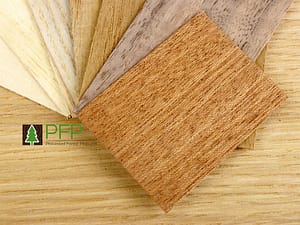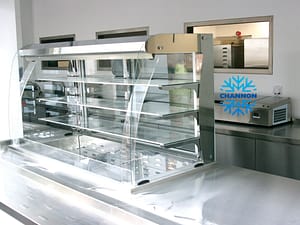The integrity and efficiency of plumbing systems are fundamental to the smooth operation of any household. Over time, even the most robust systems can develop leaks, leading to wasted water, increased bills, and potential damage to the home. Early detection of these leaks plays a crucial role in preventing such outcomes, highlighting the critical nature of leak detection in plumbing maintenance. By identifying and addressing leaks promptly, homeowners can preserve the longevity of their plumbing systems and ensure continued efficiency in water use.
Identifying Common Plumbing Leaks
Typical Leak Locations
Leaks within home plumbing systems can occur in several common areas, each presenting unique challenges in detection and repair. Pipes, often hidden within walls or under floors, can develop leaks due to corrosion, pressure changes, or physical damage. Faucets and showerheads are also prone to leaks, typically resulting from worn-out washers or seals. Toilets are another frequent source of leaks, whether from the tank to the bowl or at the base, often due to faulty flapper valves or deteriorating wax seals.
Signs and Symptoms of Plumbing Leaks
Detecting plumbing leaks early can save homeowners considerable trouble and expense. Visible signs of leaks include water stains on walls or ceilings, mold growth, and pooled water near plumbing fixtures. However, some leaks may not be immediately apparent. Unexplained spikes in water bills, the sound of running water when all taps are closed, and a musty smell in rarely used areas can all indicate hidden leaks. Monitoring for these signs is essential for early leak detection and mitigation.
Technologies Used in Plumbing Leak Detection
Overview of Modern Leak Detection Tools
Professional leak detection has advanced significantly with the development of modern tools and technologies. Acoustic sensors can detect the sound of water escaping from pipes, even through concrete or soil, making them invaluable for locating underground leaks. Thermal imaging cameras provide another sophisticated means of detection, identifying temperature differences caused by dampness in walls or floors without the need for invasive probing.
Benefits of Using Advanced Detection Methods
The adoption of these advanced tools offers numerous benefits over traditional leak detection methods. By pinpointing the exact location of a leak with greater accuracy, they minimize the need for exploratory damage to property. Furthermore, early and precise detection allows for more targeted repairs, reducing both the cost and the time required to resolve the issue. These technologies ensure that plumbing maintenance is less intrusive, more efficient, and ultimately more effective in preserving the health of plumbing systems.
DIY Leak Detection Methods
Simple Techniques for Homeowners
Detecting leaks early can save homeowners from costly repairs and water waste. Here’s a simple guide to identifying potential leaks:
- Meter Check: Turn off all water in your home and check your water meter. If it continues to move, you likely have a leak.
- Dye Test for Toilets: Add a few drops of food coloring to your toilet tank. If the color appears in the bowl without flushing, there’s a leak in the flapper valve.
- Visual Inspections: Regularly inspect under sinks, around appliances, and in the basement for any signs of moisture or mold, which could indicate a leak.
- Listening for Drips: At night, when the house is quiet, listen for the sound of dripping water, which could help locate a leak.
Limitations of DIY Methods
While DIY methods can be effective for identifying some leaks, they have their limitations. Hard-to-reach areas, underground pipes, or leaks within walls may not be detectable with simple techniques. If you suspect a leak but can’t find it, or if the repair is beyond your skill level, it’s essential to call in a professional. Professionals have the tools and expertise to accurately diagnose and repair leaks, preventing further damage to your home.
Preventative Measures to Avoid Plumbing Leaks
Routine Maintenance Tips
Regular maintenance is key to preventing leaks and extending the lifespan of your plumbing systems:
- Regularly Check Faucets and Showerheads: Tighten loose fittings and replace worn washers or gaskets.
- Inspect Pipes Annually: Look for signs of corrosion or damage, particularly in older plumbing systems.
- Monitor Water Pressure: High water pressure can lead to pipe damage. Consider installing a pressure regulator if needed.
- Drain Sediment from Your Water Heater: This prevents corrosion and leaks in the water heater tank.
Importance of Professional Inspections
While routine DIY maintenance can catch many issues, professional inspections are critical for ensuring your plumbing system’s integrity:
- Comprehensive Evaluation: Professionals can assess your entire plumbing system, identifying potential problems that might not be apparent.
- Advanced Detection Techniques: Plumbers use advanced tools for detecting hidden leaks, ensuring no issue goes unnoticed.
- Expertise and Repair: Following an inspection, professionals can perform necessary repairs or suggest improvements to prevent future leaks.
Responding to Detected Leaks
Immediate Steps to Take
Discovering a leak in your plumbing system can be distressing, but prompt action can significantly mitigate damage. Here’s what to do immediately upon detecting a leak:
- Shut Off the Water: Locate and turn off the nearest water source to the leak. If the leak’s source isn’t clear, shut off the main water supply to your home.
- Drain the Pipes: Turn on the faucets to drain the remaining water in the pipes, reducing the risk of further leakage or water damage.
- Remove Water Quickly: Use towels, mops, or a wet/dry vacuum to remove standing water to prevent mold growth and structural damage.
- Document the Damage: Take photos of the leak and any resultant damage. These can be crucial for insurance claims or warranty repairs.
- Temporary Fixes: Apply temporary fixes if possible, such as plumber’s tape or pipe clamps, while you arrange for professional repair.
Seeking Professional Repair Services
Choosing the right professional for leak repair is crucial for a lasting solution:
- Research and Recommendations: Look for licensed and insured plumbers with positive reviews or get recommendations from people you trust.
- Multiple Quotes: Obtain quotes from several service providers to ensure you’re getting fair pricing for the repair work.
- Ask About Methods: Inquire about the techniques and tools they’ll use for leak detection and repair. Opt for those using non-invasive methods when possible.
- Warranty and Follow-up: Choose professionals who offer a warranty on their work and are willing to follow up in case of future issues.
Conclusion
Proactive leak detection and efficient management are invaluable practices for any homeowner. Regularly monitoring your plumbing system, being vigilant for signs of leaks, and responding promptly when they occur can save you from the inconvenience and expense of major repairs. The benefits of such diligence extend beyond just avoiding damage; they also contribute to conserving water, reducing utility bills, and ensuring the longevity of your plumbing infrastructure.
In essence, the health of your home’s plumbing system is a cornerstone of its overall well-being, affecting not only the structural integrity of your property but also the comfort and safety of its inhabitants. Investing time and resources into leak detection and maintenance is a wise decision that pays dividends in the long run, safeguarding your home against unexpected disruptions and preserving its value.











